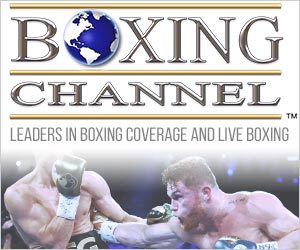Articles of 2004
Boxing Novembers to Remember
Three big fights will highlight November after what has been a lifeless few weeks for boxing. First up, on Nov. 6, Kostya Tszyu and Sharmba Mitchell will vie for the undisputed junior welterweight title in a rematch of their 2001 fight that Tszyu won by 7th-round TKO. On Nov. 20, Shane Mosley tries to gain revenge against undisputed junior middleweight king Winky Wright, who took his WBC title last March. And, on Nov. 27, old foes Erik Morales and Marco Antonio Barrera will go at it for the third time. Each Mexican great has a win in the classic series. The rubber match will settle the score.
November has always been a big month for boxing. Here are four high-profile fights that had a profound effect on the game.
Aaron Pryor KO 14 Alexis Arguello, Nov. 12, 1982: This one was called the “Battle of Champions”, and for once a fight's moniker was right on. Arguello, the “Explosive Thin Man” from Nicaragua, had already cleaned out the featherweight, junior lightweight and lightweight divisions, and he was attempting to become the first man in history to win four world titles in four different weight categories. But standing in his way was “The Hawk”, the WBA junior welterweight champion Pryor whose crazed style had made his fights must-see-TV – though no one was quite sure of the Cincinnatii native's quality. Because of Arguello's immense popularity in south Florida, the fight was staged in Miami's Orange Bowl, and it was fierce from the get-go. Pryor engaged Arguello early, but in the middle rounds, he switched gears and began using his rarely-seen boxing skills. Still, the exchanges were sizzling, and Arguello just about took Pryor's head off on a few occasions. But Pryor, the naturally bigger man, stood strong and attacked in the championship rounds. He trapped Arguello against the ropes in the 14th, unleashing a brain-numbing assault on Arguello, forcing the referee to stop the fight. Afterwards, a controversy erupted after Pryor's trainer, Panama Lewis, was overheard calling for a specific bottle with a special “mix.” But nothing was ever proven, though Pryor fell into a life of excess and was never really a factor again. Arguello retired and returned for a short-lived comeback. Neither fighter was the same after this war, which was called 1982's “Fight of the Year”. It remains the fight with which every great 140-pound battle is compared.
Riddick Bowe W 12 Evander Holyfield, Nov. 13, 1992: Both men were undefeated going into this battle for Holyfield's undisputed heavyweight title. But each viewed the ring as a proving ground that Friday the 13th at the Thomas & Mack Center in Las Vegas. Holyfield had won the title two years prior, knocking out an overweight James “Buster” Douglas in the third round. Since then, his heavyweight championship reign had been disappointing as he struggled with overmatched opponents George Foreman (42 years old), Bert Cooper and Larry Holmes (41 years old). Boxing fans were wondering what happened to the hungry contender who stormed through the division in earning his shot at Douglas. Meanwhile, Bowe was the #1 contender, bigger, stronger and more powerful than Holyfield, but with question marks of his own. Suspicions about his heart had risen after his loss to Lennox Lewis in the 1988 Seoul Olympics. And everyone wondered about his dedication, as his weight tended to fluctuate from fight to fight. Both, though, entered the ring in prime mental and physical condition, and waged a classic. Holyfield decided to go toe-to-toe with Bowe, and he held his own through eight rounds. But Bowe's size began to take its toll, and by round 10, Holyfield was battered and exhausted. A blistering right uppercut sent Holyfield to the ropes, and the “Real Deal” took a real beating. Somehow, he remained upright, and managed to rock Bowe in a thrilling end to the round. But the damage was done, and Bowe finished the job by knocking Holyfield down and winning a unanimous decision. For a year, Bowe was considered the division's new star – until Holyfield upset him a year later. Like Pryor and Arguello, Bowe was never the same after this fight. Holyfield went on to become perhaps the greatest heavyweight of his era.
Roy Jones Jr. W 12 James Toney, Nov. 18, 1994: At the time, Toney was in the prime of his career. He had upset Michael Nunn three years earlier, and proceeded to become the most important 160-pounder since Marvin Hagler a decade earlier. His 1991 war with Mike McCallum was one of the best fights of that year, and his uncanny knack for avoiding and parrying punches, while remaining in punching range, was a marvel to watch. He also had a knack for fluctuating in weight between fights and not always being disciplined in training camp. But he was talented enough to get away with it against ordinary middleweights. Jones was no ordinary middleweight. The world first saw his extraordinary hand and foot speed at the 1988 Seoul Olympics, when he was cheated of his gold medal by a bogus decision. But his talent was unmistakable, and after a slow start to his pro career, he won a world title with a decision over a green Bernard Hopkins in 1993. Toney, though, was considered the ultimate test, and the two finally met at the MGM Grand in Las Vegas. To the shock of most everybody, it wasn't even close. Jones was superior to Toney in every conceivable category, and “Lights Out” had no idea how to counter his opponent's incredible speed. In the middle rounds, Jones put Toney on the deck with a left, and cruised to a unanimous decision. It marked the beginning of the Roy Jones era. He seemed unbeatable. And he was, until Antonio Tarver knocked him out 10 years later. Toney disappeared until 2003, when he won the cruiserweight title and knocked out Evander Holyfield in an improbable comeback.
Evander Holyfield KO 11 Mike Tyson, Nov. 9, 1996: Holyfield had what was considered an impossible assignment on this night at the MGM Grand Garden in Las Vegas. He was out to beat Tyson, the WBA heavyweight champ whose career had regained steam after a jail stint in the early 1990s. This fight had been attempted before. The first time, in '90, Tyson lost to Buster Douglas, scrapping the fight. And the second time, in '91, “Iron” Mike was convicted for rape and sent off to the big house. By 1996, Holyfield was considered finished. He had looked horrible in a 1995 knockout loss to rival Riddick Bowe and a '96 victory over puffed up middleweight Bobby Czyz. And he was a 25-1 underdog when he entered the ring against a rejuvenated Tyson, who was coming off ferocious early knockouts of Frank Bruno and Bruce Seldon for the WBC and WBA titles. He had seemingly picked up right where he left off in 1991. But Holyfield was miraculously reborn, and he fought Tyson on even terms through five rounds before taking over with his superior boxing skills. In the end, Tyson had to be saved by referee Mitch Halpern, officially ending the Tyson era. They fought the rematch in June '97, which Holyfield was winning until Tyson bit off two chunks of his ears and was disqualified. Holyfield had one more big victory, over Michael Moorer in '97, before finally fading. Tyson was never the same. Both, unfortunately, are still fighting.
-
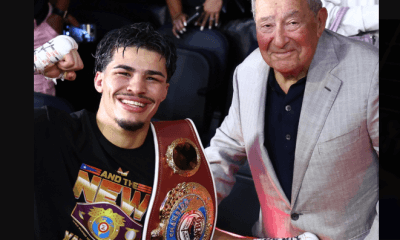
 Featured Articles4 weeks ago
Featured Articles4 weeks agoThe Hauser Report: Zayas-Garcia, Pacquiao, Usyk, and the NYSAC
-
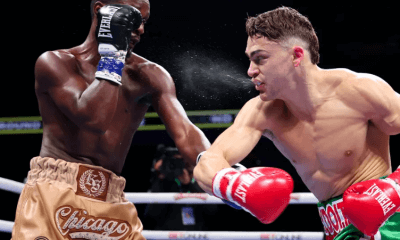
 Featured Articles3 weeks ago
Featured Articles3 weeks agoOscar Duarte and Regis Prograis Prevail on an Action-Packed Fight Card in Chicago
-
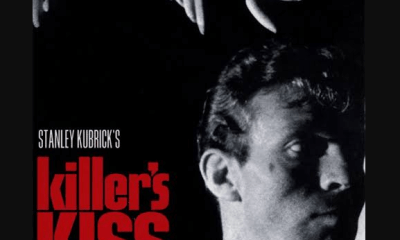
 Featured Articles3 weeks ago
Featured Articles3 weeks agoThe Hauser Report: Cinematic and Literary Notes
-
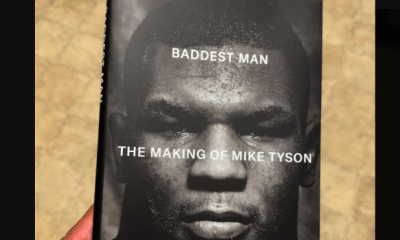
 Book Review2 weeks ago
Book Review2 weeks agoMark Kriegel’s New Book About Mike Tyson is a Must-Read
-
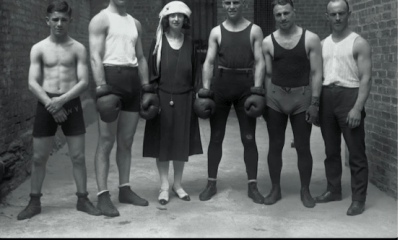
 Featured Articles4 days ago
Featured Articles4 days agoThe Hauser Report: Debunking Two Myths and Other Notes
-

 Featured Articles4 weeks ago
Featured Articles4 weeks agoRemembering Dwight Muhammad Qawi (1953-2025) and his Triumphant Return to Prison
-
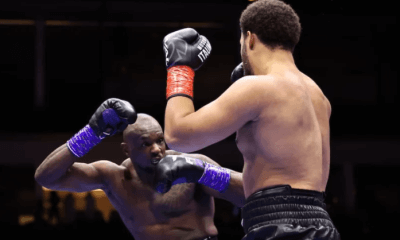
 Featured Articles1 week ago
Featured Articles1 week agoMoses Itauma Continues his Rapid Rise; Steamrolls Dillian Whyte in Riyadh
-
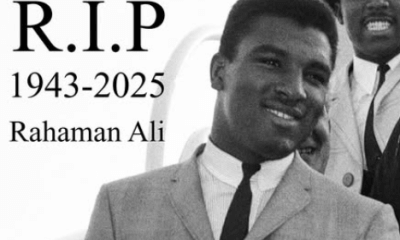
 Featured Articles3 weeks ago
Featured Articles3 weeks agoRahaman Ali (1943-2025)















